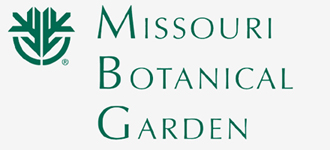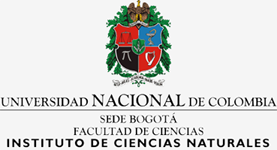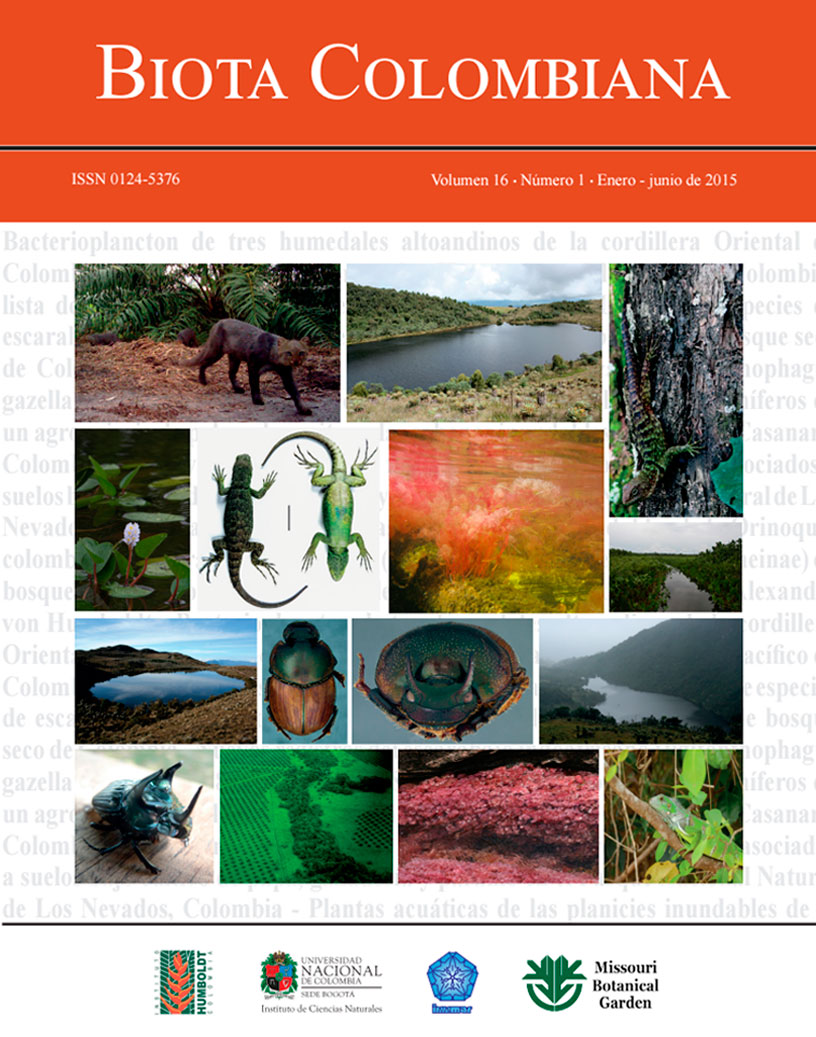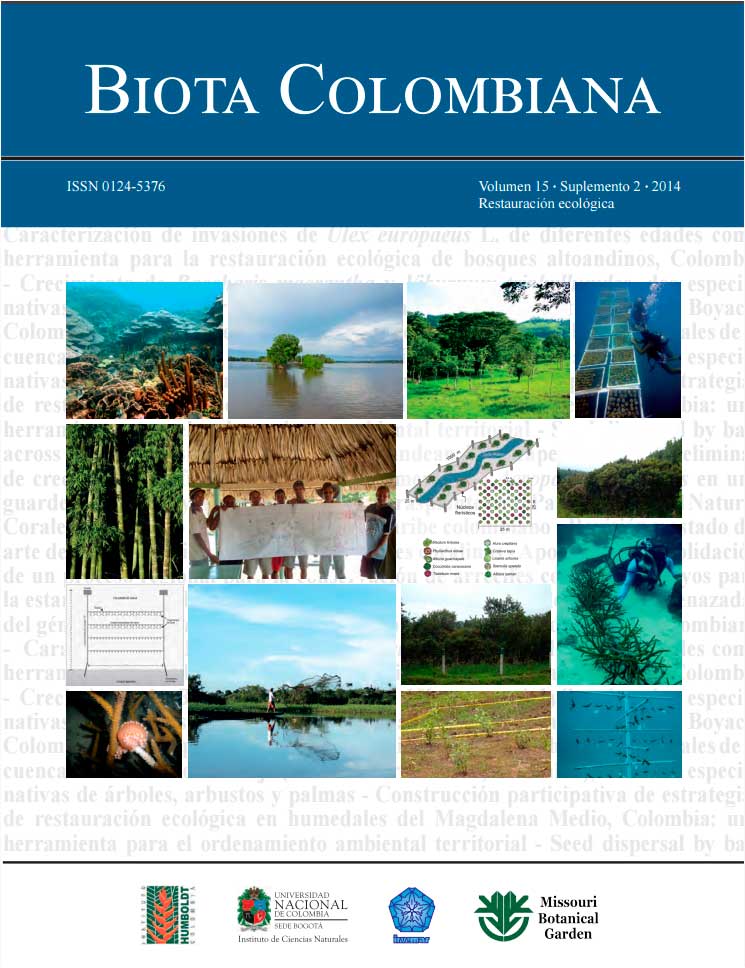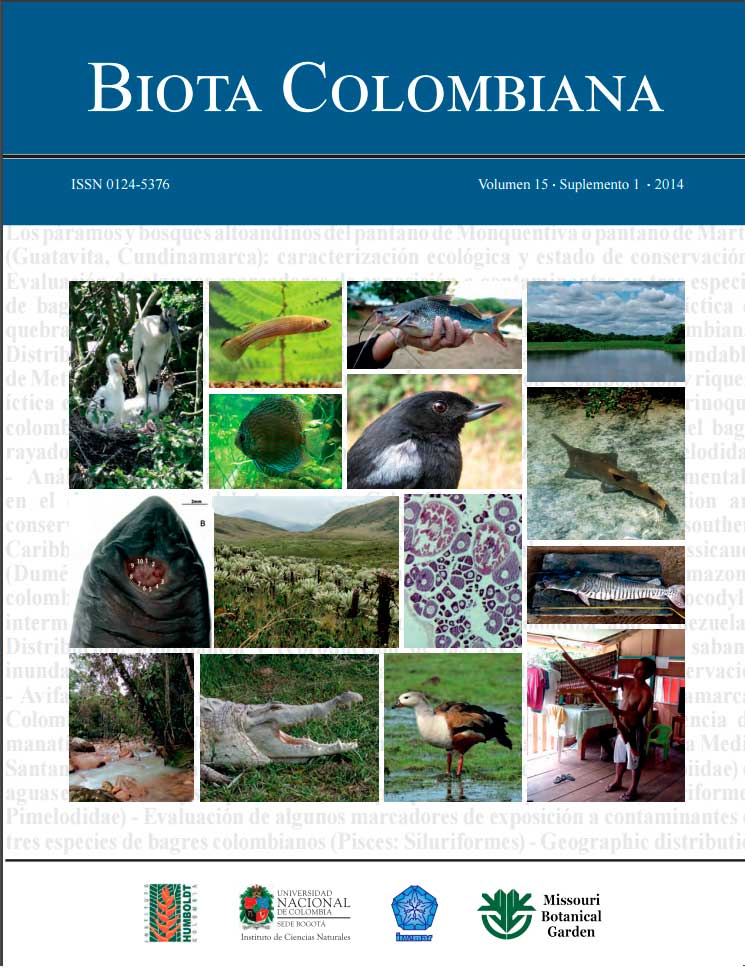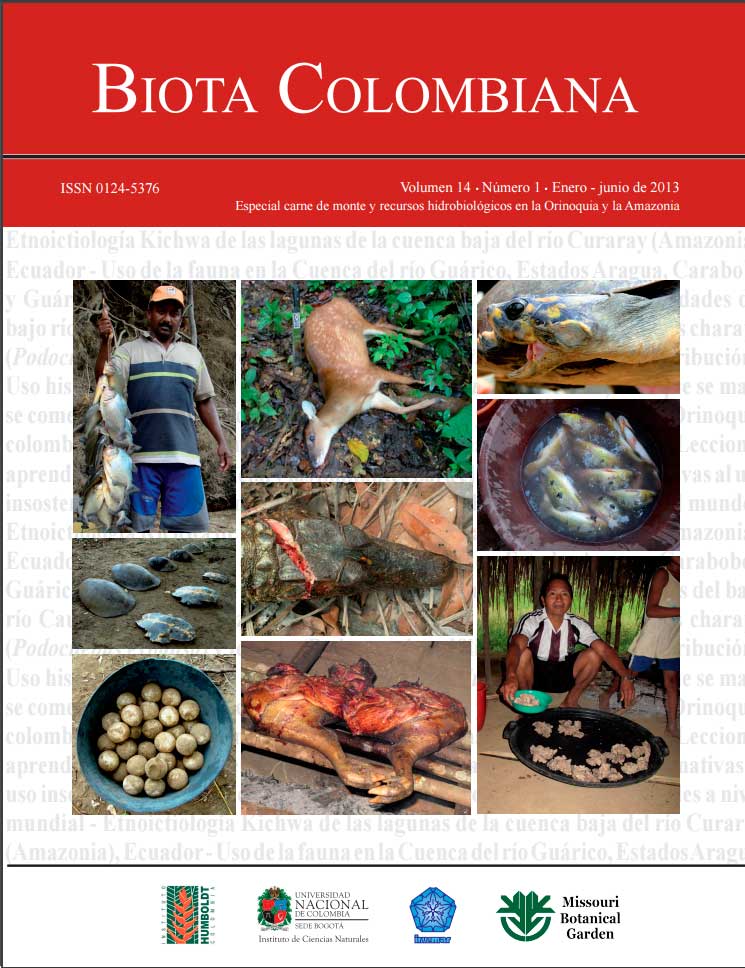In 2000 the Humboldt Institute invited Invemar, the Institute of Natural Sciences (ICN) and the Missouri Botanical Garden to produce the scientific journal Biota Colombiana, as a strategy to expand the baseline biodiversity information available for Colombia, one of the countries with the greatest biological diversity in the world and also to promote the participation of members of the scientific and academic community in the construction, actualization and dissemination of the national biodiversity inventory throughout the national territory. Since then Biota Colombiana has functioned as an institutional periodical and serial publication for the dissemination of scientific knowledge about Colombian biodiversity.
Biota Colombiana started as a publication of just lists of species but in 2005 its thematic spectrum was expanded to include systematics and biogeography. In 2010, to celebrate the International Year of Biodiversity and to promote increased knowledge, better conservation efforts and sustainable biodiversity use, the journal was opened to an even broader audience, and started accepting original research papers on botany, zoology, ecology, biology, limnology, fisheries, conservation, resource management and use of biodiversity, with good acceptance by the scientific and academic community. In 2013, in partnership with the SiB Colombia and with the support of the GBIF, the publication of Data Papers (Artículos de Datos) was officially included.
Biota Colombiana is indexed in Publindex (B), Redalyc, Latindex and Ebsco.
Editor: Carlos A. Lasso
Assistant Editors: Paula Sánchez Duarte
The Biota Colombiana editorial is interested in receiving original manuscripts from scientists that cover the topics mentioned above. All contributions are the sole responsibility of the authors and not of the Alexander von Humboldt Biological Resources Research Institute, or the magazine or its editors.
Papers may be written in Spanish, English or Portuguese, and should not exceed 40 pages (set line spacing to 1.5 lines) including tables, figures and appendices. In special cases the publisher may consider more extensive works for monographs, conference proceedings, workshops and symposia. Of particular interest to the journal are descriptions of species new to science, new geographic records and lists of regional biodiversity.
The complete guide for authors can be downloaded in both Spanish and English.
Send manuscripts or request additional information at: This email address is being protected from spambots. You need JavaScript enabled to view it.
Ethics
It is the obligation of the authors to deliver to Biota Colombiana a precise and accurate version of the results or relevant data produced by their research. Likewise, all authors must declare not to have committed scientific misconduct such as plagiarism, falsification, selection of data or duplication of publications. In this sense, it is the duty of the authors to reference or declare the origin of all images, data and ideas that come from other authors or sources that have been used. Manuscripts should be submitted with a document signed by the main author declaring that the manuscript is unpublished and has not been submitted to another journal. The order of authorship should be a joint decision of all coauthors. The participation of each author in the work must be significant to take public responsibility for the content. All ideas and opinions expressed in the manuscripts are the sole responsibility of the authors. People who made helpful comments on the manuscript or collaborated with fieldwork, lab experiments, etc. and sources of funding can be named in the acknowledgments, but without titles or acronyms (e.g. Prof., Dr., Ph.D., etc.).
In line with the latest worldwide innovations in regard to publication of data on biodiversity and scientific articles, in late 2012 the SiB Colombia and the magazine Biota Colombiana attended a conference on “Activities to enrich metadata and promote the publication of data papers” organized by the Global Biodiversity Information Facility (GBIF), to support projects aimed at promoting the publication of Data Papers or articles with biodiversity anywhere in the world.
In this sense we are pleased to report that the SiB Colombia and the Colombian magazine Biota Latin America were selected as worthy of support. Thus, with the technical support of the GBIF and implementation by the SiB, Biota Colombiana will soon include a special section of Data Papers.
Data Papers are academic publications that have emerged as a mechanism to encourage the publication of data on biodiversity and be a means to provide academic recognition of the work done by all persons involved in one way or another in the generation and management of biodiversity information.
Data Papers should describe in the best way possible the who, what, where, when, why and how of recording and storing biodiversity data, without necessarily becoming necessarily presenting a thorough analysis of those data, as is done in other types of academic publications. The novelty and advantage of this model is that the publication is always linked to a dataset through a link to a persistent and reliable web repository, in this case the information publishing platform on biodiversity SiB Colombia.
With the addition of Data Papers, Biota Colombiana is positioned as a world leader in scientific publications, being the first Latin American journal to incorporate this model and one of the first fifteen in the world, among which are the journals of the Pensoft Editorial house.
Download the complete guide for authors of Data Papers.
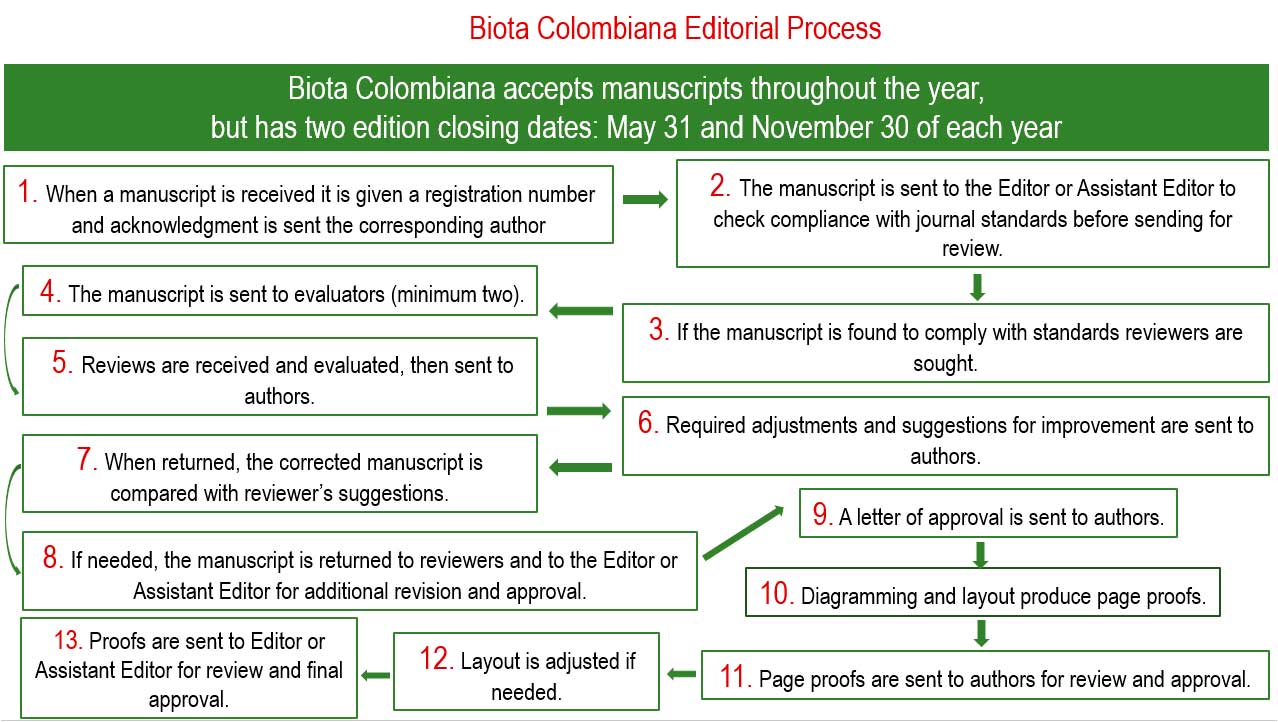
Biota Colombiana Journal, Supplement 2 - Paramos
Year: 2016
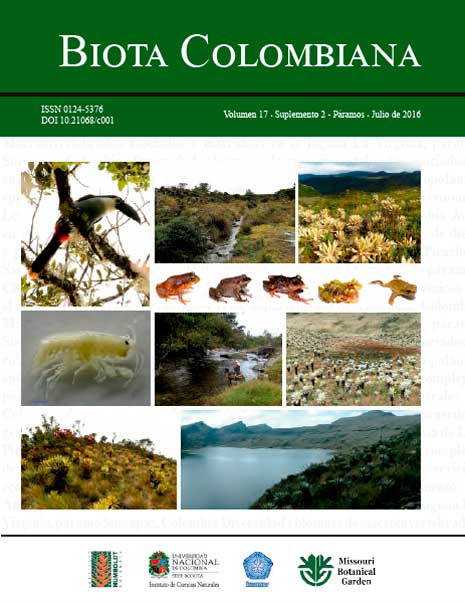
From 2013 to 2016, the Humboldt Institute, through agreement 13-014 (FA 005 of 2013), developed the project "Inputs for the delimitation of strategic ecosystems - paramos (mountain moors) and wetlands". In the paramo component of this project, we worked in collaboration with more than 20 research groups from different disciplines, covering 21 paramo complexes in the country. Although the immediate objective was to build relevant knowledge for environmental authorities in the light of the tasks assigned by law in the framework of paramo delimitation, a very significant volume of knowledge about Colombian paramos was generated, from different perspectives and disciplines that encompasses broader applications beyond simple paramo delimitation.
With the intention of documenting and presenting to the academic community a part of this knowledge, a call for contributions was opened that led to this special issue of Biota Colombiana. In response to this initiative, groups linked to the project, as well as other researchers with relevant results about paramos responded. Seven of the eight articles that we publish include the results of the work of several biodiversity research groups, which developed inventories and studies of fauna in the transition zone between high montane forest and paramo, following the methodological procedures of the Institute. Finally, the eighth article presents and discusses the perception of ecosystem services as perceived by high Andean peasant communities in Antioquia.
We are grateful to the Adaptation Fund for funding this special issue, the evaluators and the organizations and institutions that supported the authors throughout their cooperation with the project and in particular for the analysis of the results presented here.
We trust that this special issue will contribute to the academic knowledge of Colombian high Andean mountain ecosystems, as well as help disseminate it and have incidence in the decision making process for their management and conservation.
Biota Colombiana Journal, Supplement 1 - Wetlands
Year: 2016
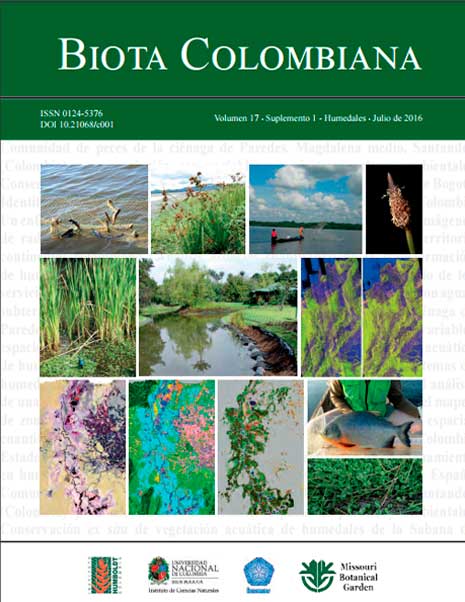
Within the framework of project 13-014 (FA 005 of 2013) signed between the Adaptation Fund and the Alexander von Humboldt Biological Resources Research Institute (IAvH), whose objective was to determine and apply the technical criteria for the delimitation of Strategic Paramo and Wetland Ecosystems, a large amount of information was generated that should be made available for decision making concerning these ecosystems in the country. With this intention, this special issue on wetlands was prepared, in which some of the results obtained from the project are presented along with research reports of other institutions that submitted articles in answer to the open call made for this special issue of Biota Colombiana.
On this occasion, a valuable contribution is made to the knowledge of wetlands at different scales of work, ranging from specific study sites in lowland and highland wetlands, results on wetlands at the national level, and comparisons of wetlands across all Ibero-America. At the local level we present research on the requirements for ex-situ conservation of the wetland vegetation in the Bogotá savannah and on the fish communities of the Paredes marsh in the middle Magdalena River Basin. At the national level, satellite image analysis was used to identify the country's wetlands and also to document their transformation through time; and radar images were analyzed to identify areas threatened by flooding. Finally, an article is included that analyzes the current status and transformation factors that affect the capacity of wetlands to provide water storage in groundwater, an important ecosystem service in Latin America and Spain.
All the information presented here is of vital importance to support the integral and differentiated management of the wetlands of our country, and will allow us to foment the idea of Colombia as a country of wetlands, a pulsing and diverse territory, which must be managed in a creative and innovative manner.
We are grateful to the Adaptation Fund for the co-financing of this special issue, to the evaluators and organizations and institutions that support the authors, among which are: Japanese Aerospace Agency, Sarvision - K & C Convention, Ideam, Universidad de Antioquia, Universidad del Magdalena, EAFIT University, Universidad Jorge Tadeo Lozano and the University of Wageningen.
Biota Colombiana Journal Volume 17 Number 1
Year: 2016
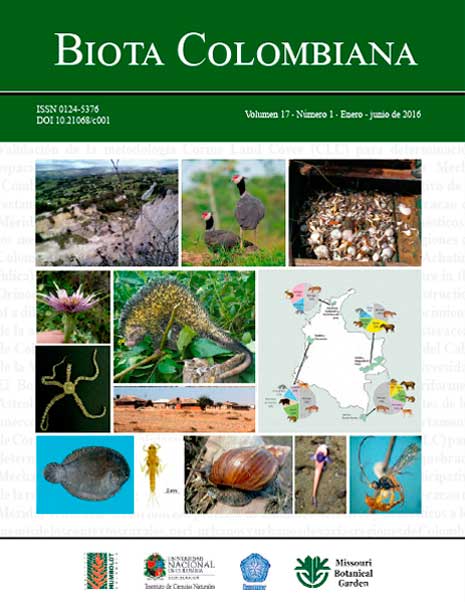
A serial journal of the Humboldt Institute in association with Invemar, the Institute of Natural Sciences (ICN) and the Missouri Botanical Garden, as a strategy to expand the baseline information of one of the most biologically diverse countries in the world.
Biota Colombiana started as a publication of lists of species but in 2005 its thematic spectrum was extended to include systematics and biogeography. In 2010, celebrating the International Year of Biodiversity and to increase our knowledge, promote better conservation and sustainable biodiversity use, it was opened to a broader audience, and began publication of original research on botany, zoology, ecology, biology, limnology, fisheries, conservation, resource management and use of biodiversity, with good acceptance by the scientific and academic community. In 2013, in partnership with the SiB Colombia and with the support of the GBIF, Data Papers (Artículos de Datos) were officially included in Biota Colombiana.
Biota Colombiana Magazine Vol. 16 No 2
Year: 2015
A serial journal of the Humboldt Institute in association with Invemar, the Institute of Natural Sciences (ICN) and the Missouri Botanical Garden, as a strategy to expand the baseline information of one of the most biologically diverse countries in the world.
Biota Colombiana started as a publication of lists of species but in 2005 its thematic spectrum was extended to include systematics and biogeography. In 2010, celebrating the International Year of Biodiversity and to increase our knowledge, promote better conservation and sustainable biodiversity use, it was opened to a broader audience, and began publication of original research on botany, zoology, ecology, biology, limnology, fisheries, conservation, resource management and use of biodiversity, with good acceptance by the scientific and academic community. In 2013, in partnership with the SiB Colombia and with the support of the GBIF, Data Papers (Artículos de Datos) were officially included in Biota Colombiana.
01_PlantasVascularesRíoPatia_Ramírez-Padilla et al._Biota 16(2)
02_Elmidae Valle del Cauca_González-Córdoba et al._Biota 16(2)
03_Distribucion Garrapata del ganado-Pulido-H. et al._Biota 16(2)
04_Aequidens superomaculatum_Hernandea-A. et al._Biota 16(2)
05_Nueva especie Pistimantis_Acosta-G-_Biota 16(2)
06_Mamiferos de Cordoba_Racero-C. et al._Biota 16(2)
07_Fragmentacion BsT Montes de Maria_Galvan-G.et al.Biota 16(2)
Biota Colombiana Magazine Vol. 16 No. 1
Year: 2015
A serial journal of the Humboldt Institute in association with Invemar, the Institute of Natural Sciences (ICN) and the Missouri Botanical Garden, as a strategy to expand the baseline information of one of the most biologically diverse countries in the world.
Biota Colombiana started as a publication of lists of species but in 2005 its thematic spectrum was extended to include systematics and biogeography. In 2010, celebrating the International Year of Biodiversity and to increase our knowledge, promote better conservation and sustainable biodiversity use, it was opened to a broader audience, and began publication of original research on botany, zoology, ecology, biology, limnology, fisheries, conservation, resource management and use of biodiversity, with good acceptance by the scientific and academic community. In 2013, in partnership with the SiB Colombia and with the support of the GBIF, Data Papers (Artículos de Datos) were officially included in Biota Colombiana.
01_Bacterioplancton-humed-altoand._Meneses_Herrera_Biota 16(1)
02_Angiosperma estado Lara(UCOB)_Alvarado_Mondragon_Biota 16(1)
03_Heteroptera del Pacifico_Padilla-Gil_Biota 16(1)
04_CoprofagosBosque-seco_Gonzalez_Medina_Biota 16(1)
05_Digitonthophagus en Colombia_Isaza et al._Biota 16(1)
06_Mamiferos-palma-aceite-Casanare_Pardo_Payan_Biota 16(1)
07_Mortalidad-fauna silvestre-colisión_DeLaOssa_Galvan_Biota 16(1)
08_Grupos-funcionales-PNN-Nevados_Avellaneda_Torres_Biota 16(1)
09_Escarabajos coprofagos IAvH_Gonzalez et al._Biota 16(1)
010_Plantas acuaticas Orinoquia Colombiana_Fernandez et al._Biota 16(1)
Biota Colombiana Volume 15, Number 2. Special Edition on Reservoirs and Regulated Rivers.
Year 2014
Our country has now worked for several years in the field of ecological restoration and significant progress can now be perceived. However, taken as a whole we find that most restoration projects have focused on the local flora with few attempts to disseminate the results or to use other approaches and work at a broader scale. In this supplement we wanted to collect studies of restoration work that highlight the social component and its link with the biotic, also including issues such as marine environments and biodiversity monitoring. In addition, we include information on research of restoration at a landscape scale; always aware that our readers need access to current and relevant information on a subject that is increasingly sensitive and requires multiple approaches.
Biota Colombiana Volume 15, Number 2. Special Edition on Reservoirs and Regulated Rivers.
Year 2014
Aware that the construction of a dam and reservoir within a riverbed generates changes in the river system and associated
 biota, the National Environmental System and electricity generating companies have been monitoring the changes that occur in river drainages and assessing their magnitude. This situation has generated new research opportunities for the Colombian academic sector and created fields of work for the generation of knowledge about the response of natural systems to this change.
biota, the National Environmental System and electricity generating companies have been monitoring the changes that occur in river drainages and assessing their magnitude. This situation has generated new research opportunities for the Colombian academic sector and created fields of work for the generation of knowledge about the response of natural systems to this change.This special issue of Biota Colombiana collects some of the research conducted in the last decade by companies in the electricity sector and universities of our country. The studies presented here show the response of aquatic biota to the formation of dams and at the same time proposed alternatives for management, prevention and mitigation of impacts.
Biota Colombiana Volume 15, Supplement 1
Year: 2014
Opened for the first time in 2009 and biannually thereafter, the National Call for Biodiversity Projects is a competition developed by Ecopetrol S.A. with support from the Ministry of Environment, Housing and Territorial Development (MADS), to promote and co-finance projects aimed at increasing our knowledge, developing practices of sustainable use and conservation of strategic ecosystems of our country.
In 2011 Colombian non-profit institutions dedicated to research in the fields of biological and cultural diversity, national and regional environmental authorities, institutes and research centers as well as universities and research groups recognized by Colciencias all participated in the competition. Supplement 1 of volume 15 of Biota Colombiana includes the results of the research of some of the winners of the 2011 competition, and other related research.
Biota Colombiana Volume 15, No 1
Year: 2014
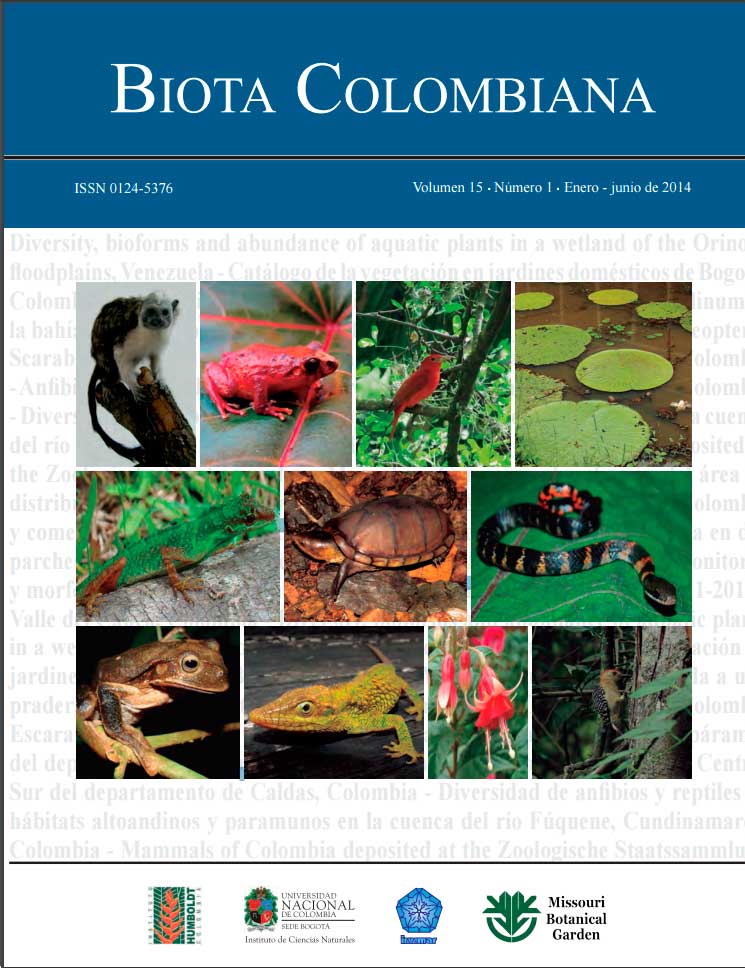 A serial journal of the Humboldt Institute in association with Invemar, the Institute of Natural Sciences (ICN) and the Missouri Botanical Garden, as a strategy to expand the baseline information of one of the most biologically diverse countries in the world.
A serial journal of the Humboldt Institute in association with Invemar, the Institute of Natural Sciences (ICN) and the Missouri Botanical Garden, as a strategy to expand the baseline information of one of the most biologically diverse countries in the world.Biota Colombiana started as a publication of lists of species but in 2005 its thematic spectrum was extended to include systematics and biogeography. In 2010, celebrating the International Year of Biodiversity and to increase our knowledge, promote better conservation and sustainable biodiversity use, it was opened to a broader audience, and began publication of original research on botany, zoology, ecology, biology, limnology, fisheries, conservation, resource management and use of biodiversity, with good acceptance by the scientific and academic community. In 2013, in partnership with the SiB Colombia and with the support of the GBIF, Data Papers (Artículos de Datos) were officially included in Biota Colombiana.
Biota Colombiana Volume 14, No 2.
Year: 2013
 A serial journal of the Humboldt Institute in association with Invemar, the Institute of Natural Sciences (ICN) and the Missouri Botanical Garden, as a strategy to expand the baseline information of one of the most biologically diverse countries in the world.
A serial journal of the Humboldt Institute in association with Invemar, the Institute of Natural Sciences (ICN) and the Missouri Botanical Garden, as a strategy to expand the baseline information of one of the most biologically diverse countries in the world.Biota Colombiana started as a publication of lists of species but in 2005 its thematic spectrum was extended to include systematics and biogeography. In 2010, celebrating the International Year of Biodiversity and to increase our knowledge, promote better conservation and sustainable biodiversity use, it was opened to a broader audience, and began publication of original research on botany, zoology, ecology, biology, limnology, fisheries, conservation, resource management and use of biodiversity, with good acceptance by the scientific and academic community. In 2013, in partnership with the SiB Colombia and with the support of the GBIF, Data Papers (Artículos de Datos) were officially included in Biota Colombiana.
El PDF a adjuntar se llama Biota 14 (2)_Jul-Dic-2013
Biota Colombiana Volume 14, Number 1 - Special Supplement - Biota Data Papers
Year: 2013
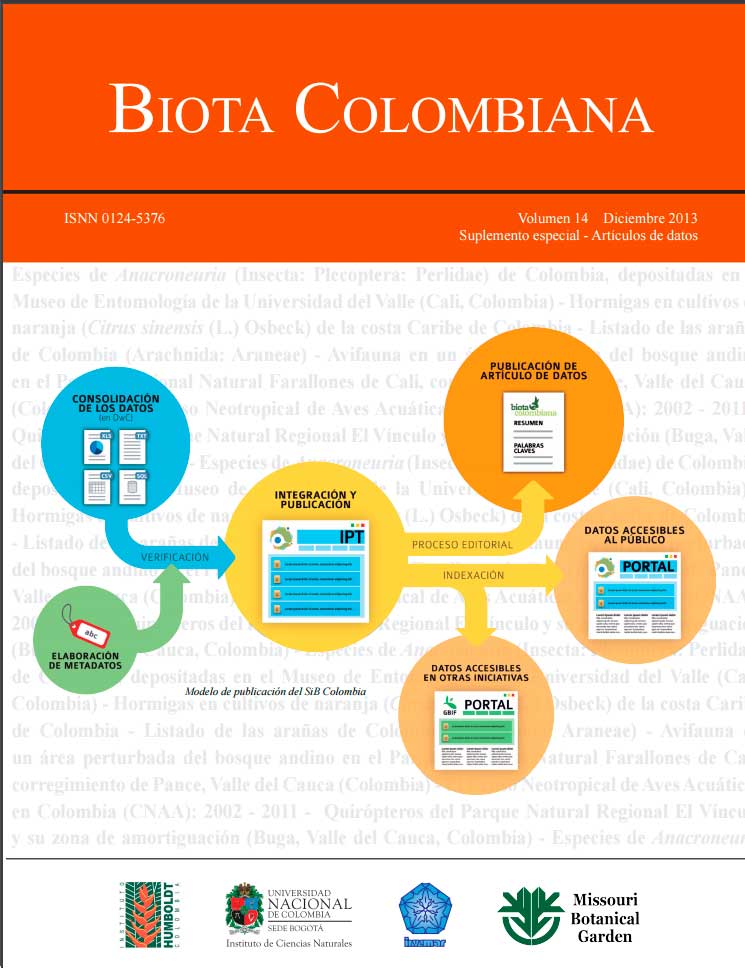 The SiB Colombia and Biota Colombiana were selected for Latin America as institutions deserving of the financial support offered by the GBIF through their “Activities to enrich metadata and Promote the publication of data papers (2012)” project, that helps promote the publication of articles on biodiversity data worldwide. Thus, with the support of GBIF and implementation of SiB, the journal Biota Colombiana from 2014 will include a special section of data papers. These papers are academic publications that have emerged as a mechanism to encourage the publication of biodiversity data and make appropriate recognition of all those involved in the generation and management of this type of information.
The SiB Colombia and Biota Colombiana were selected for Latin America as institutions deserving of the financial support offered by the GBIF through their “Activities to enrich metadata and Promote the publication of data papers (2012)” project, that helps promote the publication of articles on biodiversity data worldwide. Thus, with the support of GBIF and implementation of SiB, the journal Biota Colombiana from 2014 will include a special section of data papers. These papers are academic publications that have emerged as a mechanism to encourage the publication of biodiversity data and make appropriate recognition of all those involved in the generation and management of this type of information.Biota Colombiana Volume 14, Number 1. Special Issue: Bushmeat and Hydrobiological Resources
Year: 2013
This special issue is in part a response to the need identified by the Convention on Biological Diversity at the Ninth Conference of the Parties (COP 9) and meetings of the Liaison Group on Bushmeat, to evaluate its role in national and local economies as well as understand the biodiversity of and ecological services provided by harvested species.



